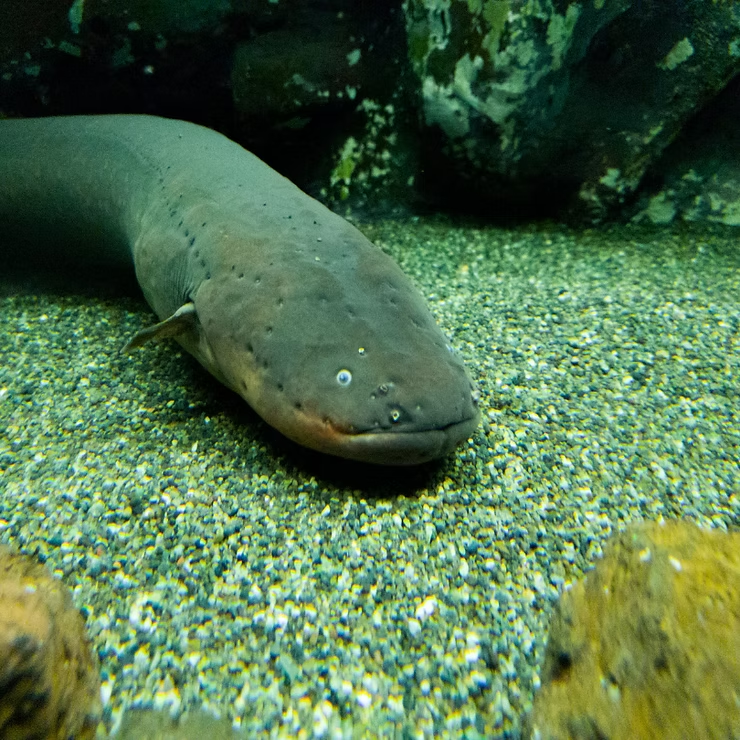Introduction to the Electric Eel
The electric eel is a remarkable freshwater creature capable of generating electricity for hunting, self-defense, and communication. Found primarily in the Amazon River Basin, it combines unique physical traits with fascinating behavioral adaptations.
Physical Characteristics
Electric eels have elongated, snake-like bodies that can reach up to 8 feet in length. Their smooth, slimy skin ranges from dark brown to gray, aiding camouflage. The most distinctive feature is their specialized electric organs, capable of producing high-voltage shocks.
Habitat and Distribution
Freshwater Environments
Electric eels thrive in slow-moving rivers, swamps, and marshes, particularly in the Amazon River Basin. Their ability to breathe air allows them to survive in oxygen-depleted waters.
Other South American Rivers
- Orinoco River in Venezuela
- Paraná River in Argentina
- Essequibo River in Guyana
Threats to Habitat
Deforestation, pollution, and dam construction threaten their natural habitats, making conservation efforts critical for survival.
Diet and Hunting
Electric eels are carnivorous, feeding mainly on fish, amphibians, and invertebrates. They use electric shocks to stun prey before capturing it with their sharp teeth.
Hunting Techniques
- Electrolocation to detect prey in murky water
- Ambush hunting from vegetation or riverbeds
- Leaping out of water to catch low-flying prey
Electric Abilities
Specialized Organs
Electric eels possess the main organ, Hunter’s organ, and Sachs’ organ. Thousands of electrocytes generate electric discharges up to 600 volts and 1 ampere.
Electrolocation and Electrocommunication
These eels navigate, locate prey, and communicate using weak electrical fields, enabling navigation and social interaction within their habitat.
Self-Defense
Electric shocks deter predators, while camouflage and strategic leaping enhance survival chances against caimans, birds, and large fish.
Reproduction and Life Cycle
Electric eels exhibit unique reproductive behaviors. Females lay hundreds of eggs in nests made of plant material and mud. Males guard and fan eggs, ensuring oxygenation and safety. Hatchlings are independent and capable of generating shocks for self-defense.
Predators and Threats
Aquatic and Land Predators
- Caimans, giant otters, river dolphins
- Jaguars and humans on riverbanks
Electric eels avoid predators using shocks, camouflage, and strategic escape behaviors.
Fascinating Facts
- Can produce shocks of up to 600 volts
- Grow up to 8 feet and weigh over 40 pounds
- Live up to 15 years in the wild and 22 in captivity
- Play significant roles in local culture and folklore
Conclusion
The electric eel is a captivating species that combines extraordinary electrical abilities with effective hunting, survival strategies, and cultural significance, making it one of the most remarkable aquatic predators in the world.

